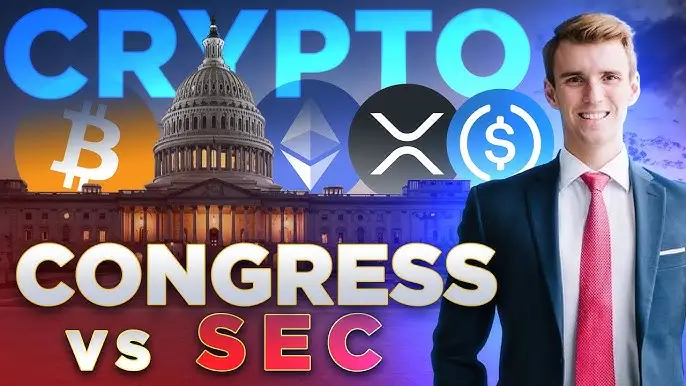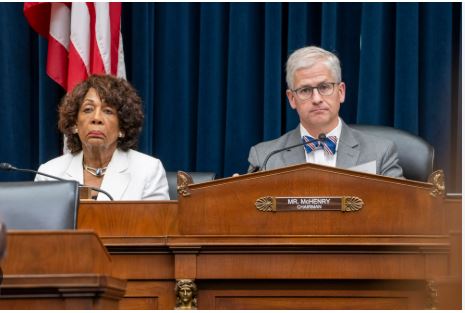In the world of crypto regulation, chaos has reigned supreme—until now. With the passing of the Financial Innovation and Technology for the 21st Century Act, or FIT21, the United States might finally be giving digital assets a much-needed legal backbone.
But what exactly is FIT21? Why should crypto traders, developers, and enthusiasts care? And how could this bill shape the future of cryptocurrency in America?
Let’s break down the bill’s contents, its supporters and critics, and—most importantly—what it means for your crypto wallet.
What is the FIT21 Bill?
Signed into law in mid-2025, FIT21 is the first major comprehensive framework designed to govern digital assets in the U.S. The bill aims to define which tokens are securities and which are commodities, thus clarifying jurisdiction between the SEC and the CFTC.
For years, these two regulatory bodies have jostled over who gets to oversee what. FIT21 attempts to settle that turf war.
At its core, the legislation addresses three major pain points:
- Legal clarity for token classification
- A registration process for digital asset intermediaries
- Stablecoin oversight and disclosure requirements
FIT21 is being hailed as a milestone step toward legitimizing crypto innovation while protecting consumers—at least on paper.
The SEC vs. CFTC Tug-of-War (Finally Addressed)

Before FIT21, the crypto industry was operating in a regulatory gray zone. The Securities and Exchange Commission (SEC) often considered most tokens as unregistered securities, aggressively targeting platforms like Coinbase, Ripple, and Binance.
Meanwhile, the Commodity Futures Trading Commission (CFTC) claimed oversight on digital commodities like Bitcoin.
FIT21 introduces a “decentralization test” to determine which agency governs a particular asset. If a token project can prove it is sufficiently decentralized, it falls under the CFTC’s oversight as a commodity. If not, it remains a security, under SEC jurisdiction.
This test is revolutionary—it gives crypto projects a clear path to compliance, rather than operating in fear of a surprise lawsuit.
How FIT21 Redefines “Digital Asset Intermediaries”
The bill goes further than classifying tokens—it also outlines the rules for intermediaries: exchanges, custodians, and brokers. FIT21 proposes a dual registration framework allowing firms to register with both the SEC and CFTC, depending on the assets they handle.
For the first time, crypto companies will have a legal process that reflects the unique nature of blockchain ecosystems. Think of it as FINRA meets DeFi—minus the chaos.
Stablecoins and Transparency
While not the primary focus of the bill, stablecoins get a mention. Under FIT21, issuers of asset-backed stablecoins (like USDC and USDT) are required to disclose reserves, auditing procedures, and redemption policies.
This provision aims to avoid “Terra-style” meltdowns that shook investor confidence. For institutions waiting in the wings, such transparency could be the green light to start building crypto-based financial products.
Critics of FIT21: Not Everyone’s Cheering

Despite its milestone status, the FIT21 bill hasn’t escaped criticism.
Some SEC commissioners have called it a gift to crypto corporations, warning that it might weaken investor protections. Consumer advocacy groups argue that the decentralization test is too vague and exploitable, opening the door for risky assets to fly under the regulatory radar.
Then there’s the practical side: Will the SEC even honor this decentralization framework without legal challenges?
Regardless, FIT21 is law now—and the industry will have to adapt.
What it Means for the Average Crypto User
If you’re an everyday investor, you might be wondering, “How does this actually affect me?”
Here’s how:
- More Clarity, Less Confusion: Exchanges and tokens will now have clearer guidelines, reducing the chances of delistings, asset freezes, or compliance drama.
- Investor Protections: With clear registration requirements and disclosure rules, the market is likely to become more transparent—great news for avoiding shady rug pulls.
- Broader Access: Institutional investors may now have the confidence to participate, meaning more liquidity and fewer extreme price swings.
In short: A safer, more legitimate market could be on the horizon.
FAQs from the Crypto Community
Q1: Is the FIT21 bill good or bad for crypto?
It’s a net positive. It legitimizes the industry and clarifies regulatory boundaries. However, it depends on how regulators choose to enforce it.
Q2: Will FIT21 kill DeFi?
Not directly. But DeFi platforms that serve U.S. users may face pressure to comply with new registration and disclosure requirements.
Q3: What happens to tokens already deemed securities by the SEC?
Those classifications still stand unless successfully challenged. FIT21 creates a pathway for future tokens but doesn’t necessarily “un-ring” the bell on past actions.
Q4: How long will it take for FIT21 to be fully implemented?
Some provisions take effect immediately, while others will roll out over the next 18–24 months, depending on rule-making timelines.
Q5: Will this affect the price of Bitcoin or Ethereum?
Possibly. Regulatory clarity often boosts investor confidence, and a favorable interpretation of Ethereum as a commodity could drive demand.
Summary
The FIT21 Bill represents a seismic shift in how the United States treats crypto. By offering long-awaited regulatory clarity—especially around token classification and intermediary responsibilities—the bill provides the framework for a more secure, compliant, and investor-friendly digital asset ecosystem.
Key Takeaways:
- FIT21 clarifies SEC vs. CFTC roles in digital asset regulation
- Introduces a decentralization test for token classification
- Creates a dual registration process for intermediaries
- Requires stablecoin issuers to disclose reserves and redemption info
- Could improve trust and institutional participation in crypto markets
✅ Ready to go deeper into the evolving crypto legal landscape? Head on to our guides for insider gems on how to go about the crypto space or be the first to catch up with market trends.

